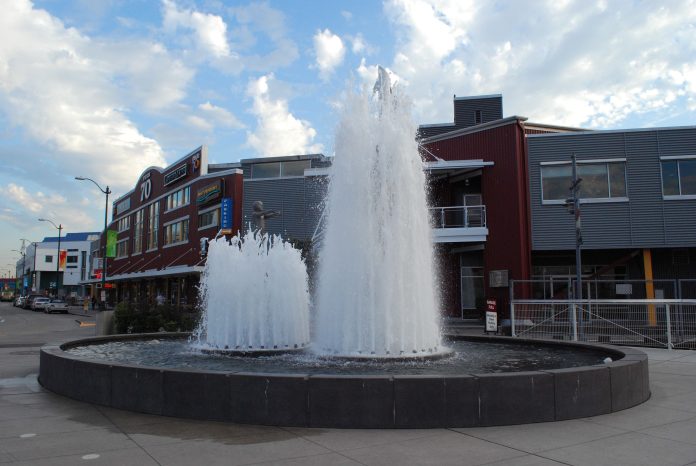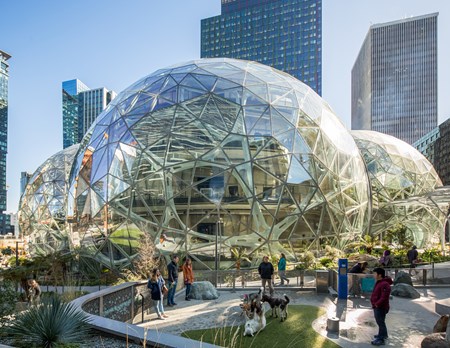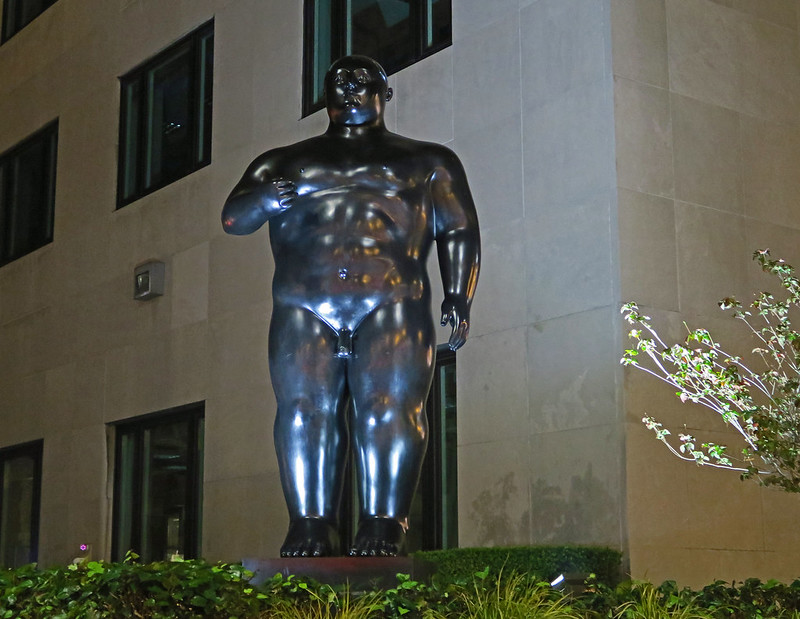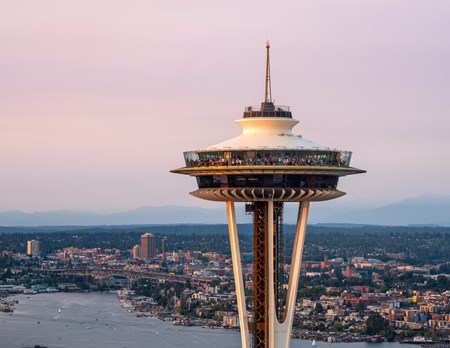
In the dark recesses of the municipal code, between definitions of Electric Vehicles and Entrance Ramps, Seattle’s zoning ordinance turns sexy. It lustily describes stimulation and arousal. It breathlessly talks of fondling and buttocks. Again and again it mentions “specified anatomical areas.”
This thirst trap is the definition of Entertainment Use, commercial uses in which recreational, athletic, and/or cultural opportunities are provided for the general public. And to clearly describe theaters, sports, and recreation as entertainment, the zoning ordinance also goes to some pretty funny lengths (lol) to separate out Adult Entertainment.
In the definitions are two important terms. (I’ll note the triple-nesting of these important terms within two other definitions, which is irritating, but we’ll carry on.)
23.84A.010 "Entertainment Use" 2. "Motion picture theater, adult" a. "Specified Sexual Activities": (1) Human genitals in a state of sexual stimulation or arousal; (2) Acts of human masturbation, sexual intercourse or sodomy; (3) Fondling or other erotic touching of human genitals, public region, buttock or female breast. b. "Specified Anatomical Areas": (1) Less than completely and opaquely covered: (a) Human genitals, pubic region, (b) Buttock, or (c) Female breast below a point immediately above the top of the areola; or (2) Human male genitals in a discernibly turgid state, even if completely and opaquely covered.
To be honest, the zoning ordinance somehow creates the least clinical and most descriptive discussion of sex and the human body possible. A short aside, I did most of the code searching for this article based on the term “areola” because it’s a word that only shows up when talking nudity laws, even when the terms, nudity, or sex, or morals, are not used. And it’s comedy gold to explain that you’ve spent the whole day looking for areolae in the zoning ordinance. It also emphasizes the thesaurus combing mindset that goes into these definitions. The law cannot be vague or it is unenforceable, but this kind of loquacious specificity causes other problems. Simply, wordiness gets in the way.
Zoning is one of three places where the Seattle Municipal Ordinance gets into nighttime words. The code’s Title 6 – Business Regulation talks about the requirements for business licenses for Adult Entertainment establishments. And Title 12A – Criminal Code has some descriptions to establish Offenses Against Public Morals. And they don’t agree on the terms.
The Zoning Ordinance puts displays of erotic material under the antiquated term Panoram, Adult, defined as a “a device which exhibits or displays for observation by a patron a picture or view from film or videotape or similar means which is distinguished or characterized by an emphasis on matter depicting, describing, or relating to ‘specified sexual activities’ or ‘specified anatomical areas.’ Links are ours for folks who don’t know what physical media is. Seattle’s Title 12 expands such material in the Criminal Code to include “flagellation or torture in the context of a sexual relationship, or emphasizing the depiction of adult human genitals.”

Instead of sharing the definition of Specified Sexual Activities from the zoning ordinance, Seattle’s Title 6 licenses adult entertainment under its own rules. Adult entertainment involves a person who is “unclothed or in such attire, costume or clothing as to expose to view any portion of the breast below the top of the areola or any portion of the pubic region, anus, buttocks, vulva or genitals” or allows the touching of those parts with intent to sexually arouse. Title 6 does not specify the gender of the areola. In other words, Seattle says dancing man nipples can only be uncovered in strip clubs.
Seattle is not alone in working blue, grownup words, into the law. A survey of all King County’s 39 municipalities show that the vast majority follow the same blueprint. All but the smallest cities include a specific business licensing requirement adult entertainment. Separately, many define Adult Uses in their zoning ordinance and restrict their locations. Many have a prohibition of public nudity or defer to the state law by reference.
The four jurisdictions that have no rules on adult entertainment are Beaux Arts Village, Hunts Point, Medina, and Skykomish. The Bellevue-orbiting mini-municipalities are not a surprise, given their tiny lakefront residential nature. The codes only mention “adult” in context of Adult Family Homes which provide personal care for a half-dozen adults. Skykomish and its 200 or so people amongst the most picturesque part of the Cascades may just not have the space.
But the rest of King County’s cities replicated Seattle’s three-prong blueprint to displays of explicit material. This garters-and-pasties-and-clamps approach further emphasizes the issues of defining the same thing multiple times across the city code.

Kent includes definitions of nudity in Title 9 – Criminal Code as “male or female genitals, pubic hair, pubic area, perineum, anus, or bottom one-half of the anal cleft.” The city’s Title 5 – Adult Entertainment and the Title 15 – Zoning definition are the same: “Less than completely and opaquely covered human genitals, pubic region, buttocks, anus, or female breast below a point immediately above the top of areolae; or Human male genitals in a discernibly turgid state, even if completely and opaquely covered.” Then Kent includes a third definition in Title 9 – Acts Prohibited in Alcoholic Beverage Establishments, prohibiting servers who are “unclothed or in such attire, costume or clothing as to expose to view any portion of the breast below the top of the areolae or of any portion of the pubic hair, anus, cleft of the buttocks, vulva or genitals.” Three separate descriptions of butts requires a Tina Belcher link.
The cities that diverge from this form are also illustrative. Clyde Hill has a definition of sexual intercourse that starts “has its ordinary meaning” and then turns into a harlequin romance. They also include a stage height provision (minimum 18 inches) for performers providing “certain forms of entertainment.” While most other cities have Adult Entertainment provisions, Clyde Hill does not, and only includes this description in Section 9.30 – Crimes Relating To Public Morals. A stage height for nude performance is common, but essentially a building rule hidden in Clyde Hill’s crime title.
Over the county’s 39 municipalities, it’s the exceptions that stand out. Carnation and Newcastle are the only two whose zoning ordinance specifically points at the city’s Adult Entertainment rules for definitions. SeaTac and Maple Valley are the only two that don’t specify “areola of the female breast” in the zoning code, although both go on to gender the provision elsewhere. Nine cities — Algona, Duvall, Issaquah, Kenmore, Lake Forest Park, Milton, Normandy Park, North Bend, and Snoqualmie — only have adult entertainment defined in a specific provision of the business license title and defer entirely to that from the zoning ordinance.
Interestingly, Duvall does include a conspicuous ordinance limiting sexually-oriented business activity at Duvall Days, the city’s annual summer party. This sounds like a solution that comes from a VERY specific event. We have contacted the City of Duvall and will get back to you with what we hope is an interesting story.

The effect on the other 30 cities is that language is given the chance to drift as it’s copied across their code. Like Seattle and Kent, phrases that sound specific at first get altered when they show up elsewhere. It’s an imperfect game of telephone that takes away from the effectiveness of the ordinance as a whole. While vagueness can void a law, contradiction can too.
More broadly, nudity laws are some of the last holdouts of gendering in city codes. Every one of these ordinances include rules of construction that apply the law to include masculine and feminine gender (or other genders, as Seattle), unless inconsistent with the context. In almost every city, the nudity laws are the only provisions that specify “male” or “female” in the entire ordinance. At some point, every ordinance sexualized female breasts. These are also the only places in the ordinance that discuss sodomy. Washington repealed its anti-sodomy laws in the 1970’s, but the echoes continue getting called out in the zoning ordinances of most of its municipalities.
Should the cities decide it is time to unwind some of this breathless bedroom talk, they’re going to have more work than anticipated. Ordinances are a record of laws, but also of time and place. A lot of these terms may not be needed or preferred any more. But by repeating the same rules, a little different, lots of places across the ordinance, it makes the rules impossible to update when their time is over. These towns may want to relegate Specified Sexual Activities to the dark, but the ordinance has to exist in daylight. Which may or may not be legal for male areola in Seattle.
Ray Dubicki is a stay-at-home dad and parent-on-call for taking care of general school and neighborhood tasks around Ballard. This lets him see how urbanism works (or doesn’t) during the hours most people are locked in their office. He is an attorney and urbanist by training, with soup-to-nuts planning experience from code enforcement to university development to writing zoning ordinances. He enjoys using PowerPoint, but only because it’s no longer a weekly obligation.

